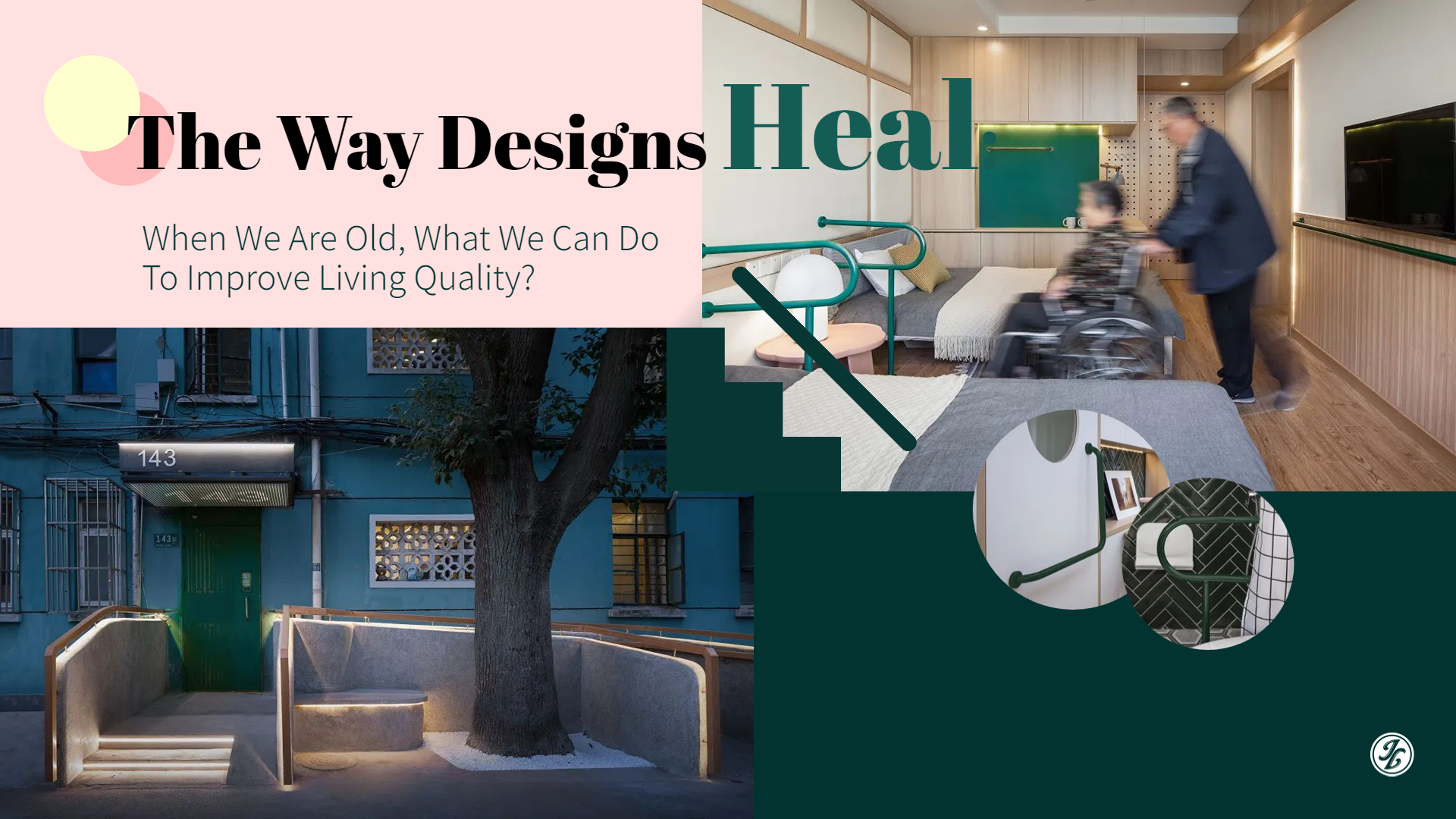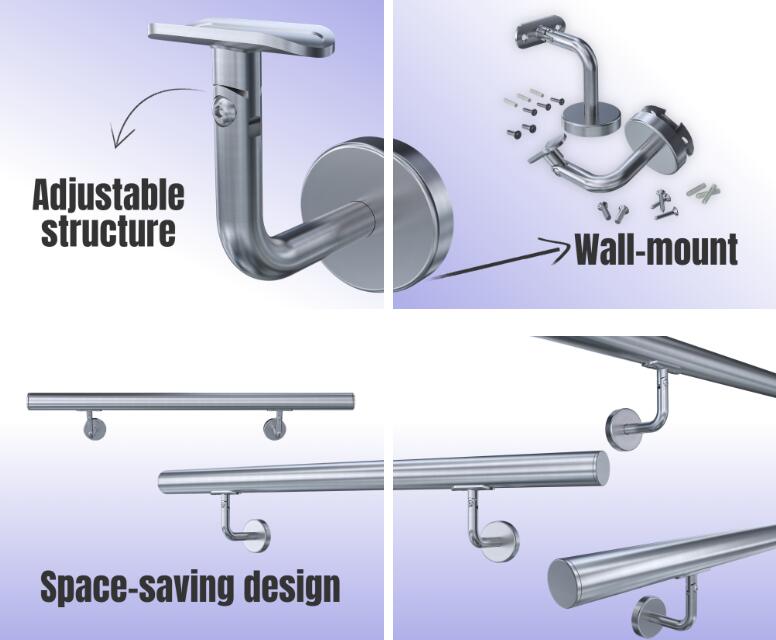On February 28, China's National Bureau of Statistics released preliminary calculations. At the end of the year, the national population was 1,411.75 million, a decrease of 850,000 from the end of the previous year. This is the first decrease in China's population since 1962. It reflects that the aging of China's population will become more severe.
In 2020, China's population aged 65 and over will reach 191 million, accounting for 13.5% of the total population. It is estimated that in 2057, China's population over the age of 65 will reach a peak of 425 million, accounting for 32.9%-37.6% of the total population.
In 2020, China's population aged 80 and above is 36.6 million, and it is expected to increase to 159 million in 2050. It will appeal to more elderly health problems and more elderly people will live alone. Thereby, the age-appropriate transformation of architecture and design has to update and prepare for future dilemmas.
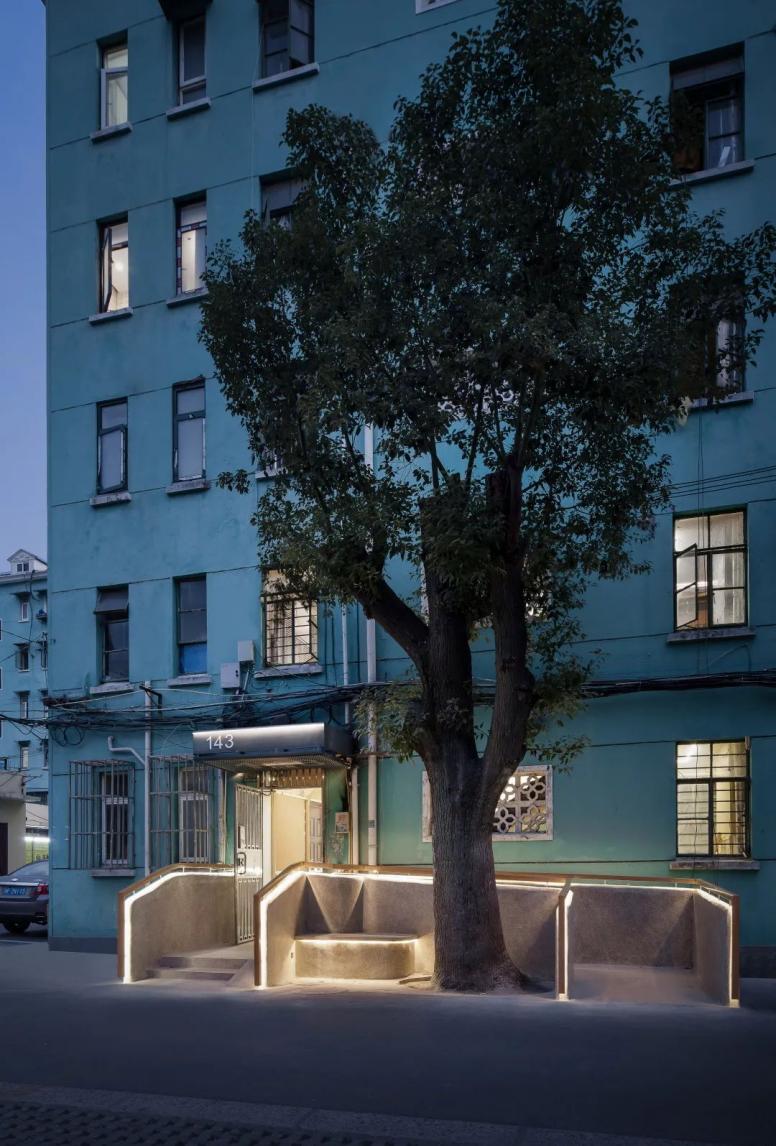
In an old residential area in Shanghai, the design team, Amomo, runs through the aging-friendly design from indoors to outdoors, from home to the community.
In the indoor space, intelligent tracks and robotic arms are introduced to create "mechanical" nurses to solve the life problems caused by weak eyesight and inconvenient legs and feet of the elderly. All-round photosensitive lighting is introduced in the corridor, and the ramp handrail solutions on both sides make it easier for the elderly to enter and exit the house.
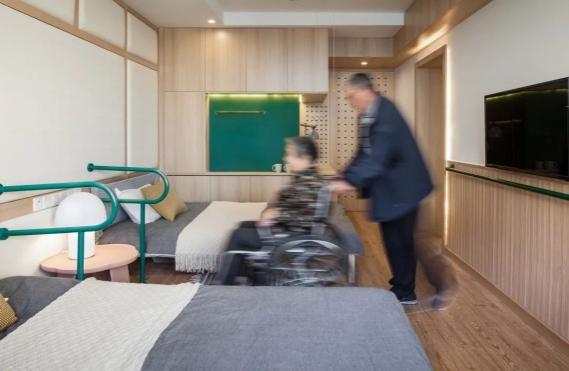
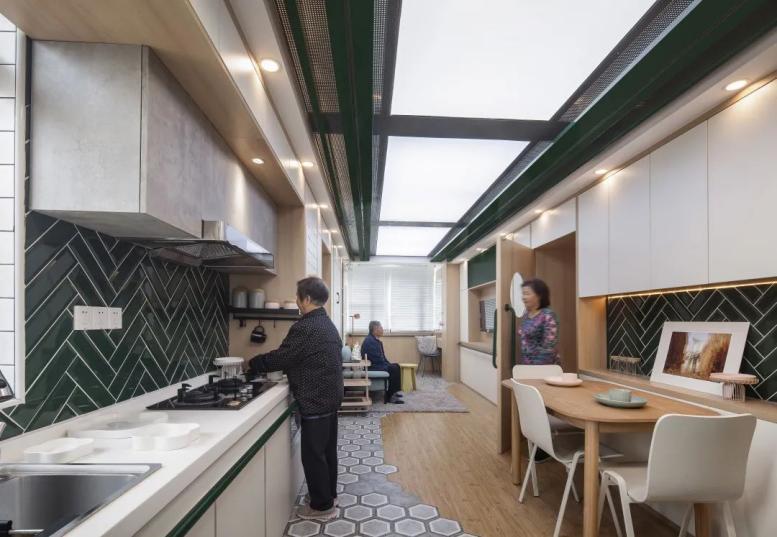
In order to meet the daily travel needs of the elderly, the design team set up a community slow-moving system, custom handrails solutions for the whole site, and a ground guidance system for the whole site in key parts. Whether it is going home, or going to the park, restaurant, and activity center, the road is unobstructed and accessible.

During the survey before design, the cafeteria was the most popular among elderly residents in the surrounding area. Ultimately, the plan was finalized to meet this need by retrofitting a disused gas station.
The restaurant also functions as a public space. In addition to the platform on the second floor, the tables and chairs inside the restaurant can also be removed to form a large flexible space to meet the daily activity needs of the elderly. Design care goes beyond basic needs and soothes the emotions of older people.
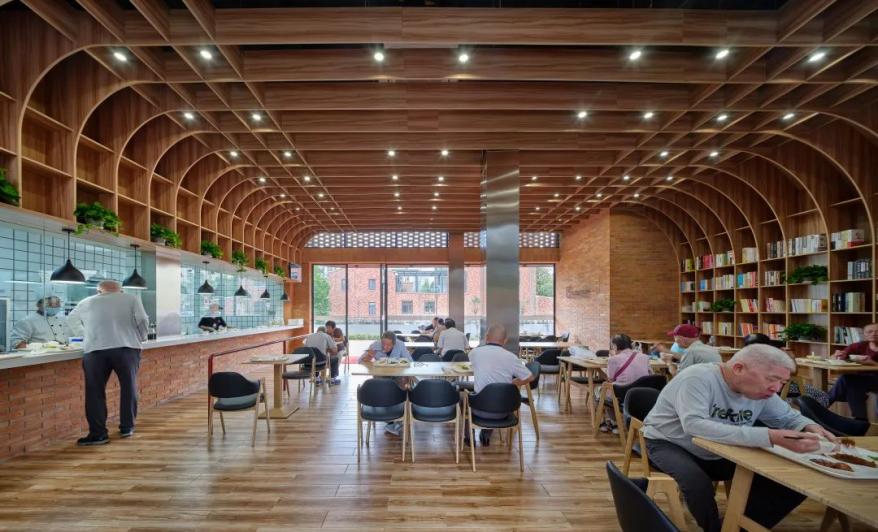
Actually, many countries are inevitably becoming aging societies.
Buildings that are friendly to older people prioritize accessibility, safety, comfort, and convenience. Here are some specific design elements to consider:
1. Accessibility: Older people may have mobility issues, so it's important to ensure that buildings are wheelchair-friendly with ramps and elevators. Wider doors and hallways also make it easier for older people to navigate.
2. Safety: Older people are at a higher risk of falls, so building design should prioritize safety. This includes slip-resistant floors, custom handrails(such as the courtyard handrail projects), and adequate lighting throughout the building.
3. Comfort: Temperature control, comfortable seating, and well-lit common areas can help make older people feel more comfortable and at home.
4. Convenience: Easy access to amenities such as grocery stores, medical facilities, and public transportation can help older people maintain their independence.
5. Technology: Technology can play a role in making buildings more friendly to older people, such as the use of voice-activated smart devices for lighting and temperature control, or remote monitoring systems for health and safety.
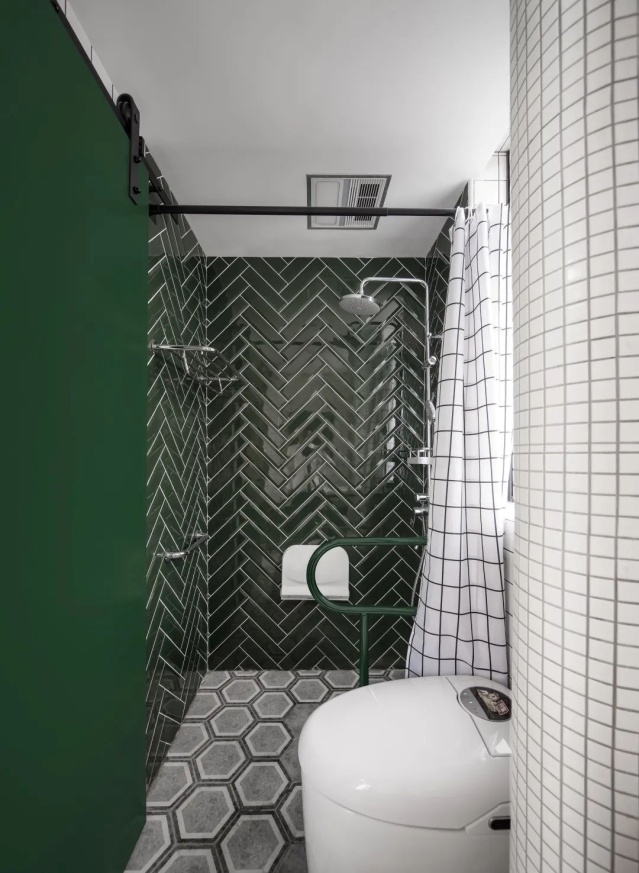
Improving the accessibility of a building involves making modifications that enable people with disabilities to use and access the building with ease. Here are some ways to improve the accessibility of a building:
Have you ever heard of ramp handrails and courtyard handrails? We can't deny that they provide a certain help for the walking of the elderly. Custom handrails can be installed in various areas, such as stairways, bathrooms, and hallways, to provide support where it is needed most.
In a word, improving the accessibility of a building not only benefits people with disabilities but also makes the building more welcoming and usable for everyone.
Yes, many building codes have requirements for accessibility to ensure that buildings are accessible to people with disabilities.
In the United States, the Americans with Disabilities Act (ADA) is the federal law that sets requirements for accessibility. The ADA requires that all public and commercial buildings meet certain standards for accessibility, including:
1. Minimum width for doorways and hallways
2. Accessible routes and entrances
3. Accessible restrooms
4. Accessible parking
5. Accessible routes and ramps
6. Accessible elevators and lifts
7. Visual and auditory alarms
8. Tactile signage
9. Accessible telephones
The ADA standards apply to new construction and major renovations of existing buildings. However, many states and localities have also adopted building codes and standards that require accessibility in new construction and renovations. Some of these codes may have additional or stricter requirements than the ADA.
In 2020, China's population aged 65 and over will reach 191 million, accounting for 13.5% of the total population. It is estimated that in 2057, China's population over the age of 65 will reach a peak of 425 million, accounting for 32.9%-37.6% of the total population.
In 2020, China's population aged 80 and above is 36.6 million, and it is expected to increase to 159 million in 2050. It will appeal to more elderly health problems and more elderly people will live alone. Thereby, the age-appropriate transformation of architecture and design has to update and prepare for future dilemmas.

In an old residential area in Shanghai, the design team, Amomo, runs through the aging-friendly design from indoors to outdoors, from home to the community.
In the indoor space, intelligent tracks and robotic arms are introduced to create "mechanical" nurses to solve the life problems caused by weak eyesight and inconvenient legs and feet of the elderly. All-round photosensitive lighting is introduced in the corridor, and the ramp handrail solutions on both sides make it easier for the elderly to enter and exit the house.



During the survey before design, the cafeteria was the most popular among elderly residents in the surrounding area. Ultimately, the plan was finalized to meet this need by retrofitting a disused gas station.
The restaurant also functions as a public space. In addition to the platform on the second floor, the tables and chairs inside the restaurant can also be removed to form a large flexible space to meet the daily activity needs of the elderly. Design care goes beyond basic needs and soothes the emotions of older people.


Actually, many countries are inevitably becoming aging societies.
| Country | The percentage of population aged above 65 |
| Japan | 28% |
| Italy | 23% |
| Greece | 21% |
| Germany | 21% |
| Spain | 19% |
| South Korea | 15% |
| United States | 16% |
What designs of buildings are friendly to old people?
Buildings that are friendly to older people prioritize accessibility, safety, comfort, and convenience. Here are some specific design elements to consider:
1. Accessibility: Older people may have mobility issues, so it's important to ensure that buildings are wheelchair-friendly with ramps and elevators. Wider doors and hallways also make it easier for older people to navigate.
2. Safety: Older people are at a higher risk of falls, so building design should prioritize safety. This includes slip-resistant floors, custom handrails(such as the courtyard handrail projects), and adequate lighting throughout the building.
3. Comfort: Temperature control, comfortable seating, and well-lit common areas can help make older people feel more comfortable and at home.
4. Convenience: Easy access to amenities such as grocery stores, medical facilities, and public transportation can help older people maintain their independence.
5. Technology: Technology can play a role in making buildings more friendly to older people, such as the use of voice-activated smart devices for lighting and temperature control, or remote monitoring systems for health and safety.

How to improve the accessibility of a building?
Improving the accessibility of a building involves making modifications that enable people with disabilities to use and access the building with ease. Here are some ways to improve the accessibility of a building:
Install ramps and lifts
Ramps and lifts enable people with mobility impairments to access different floors of the building. Ramps should be installed at entrances and other areas of the building that require access.Widening doorways
Widening doorways helps to accommodate wheelchair users and people with other mobility aids such as walkers.Installing custom handrails
Installing handrails can be very helpful for elderly people. Handrails can provide additional support and stability for elderly individuals while walking or standing, reducing the risk of falls and injuries.Have you ever heard of ramp handrails and courtyard handrails? We can't deny that they provide a certain help for the walking of the elderly. Custom handrails can be installed in various areas, such as stairways, bathrooms, and hallways, to provide support where it is needed most.
Improving lighting
Proper lighting helps people with visual impairments to navigate the building. The use of contrasting colors, such as black and white, can also help visually impaired individuals navigate the building.Improving signage
Signs should be clear and easy to read, with large fonts and contrasting colors. Signage should also be placed at a height that is easy to reach for people with disabilities.Providing accessible bathrooms
Bathrooms should be designed to be wheelchair accessible, with wider doors, grab bars, and sinks at a lower height.Creating accessible parking
Parking spots for people with disabilities should be located close to the building and be clearly marked.In a word, improving the accessibility of a building not only benefits people with disabilities but also makes the building more welcoming and usable for everyone.
Do any building codes have requirements for accessibility?
Yes, many building codes have requirements for accessibility to ensure that buildings are accessible to people with disabilities.
In the United States, the Americans with Disabilities Act (ADA) is the federal law that sets requirements for accessibility. The ADA requires that all public and commercial buildings meet certain standards for accessibility, including:
1. Minimum width for doorways and hallways
2. Accessible routes and entrances
3. Accessible restrooms
4. Accessible parking
5. Accessible routes and ramps
6. Accessible elevators and lifts
7. Visual and auditory alarms
8. Tactile signage
9. Accessible telephones
The ADA standards apply to new construction and major renovations of existing buildings. However, many states and localities have also adopted building codes and standards that require accessibility in new construction and renovations. Some of these codes may have additional or stricter requirements than the ADA.
It is important to consult with local building officials to ensure compliance with all applicable codes and standards for accessibility. By complying with accessibility requirements, buildings can provide access to all members of the community and increase the usability of the built environment.
Jinling Steel Solutions pursues to give a hand in building an all-group-friendly society. We deeply believe that design can improve our living environment, not only making it no barrier but also making it aesthetically and physically comfortable.
